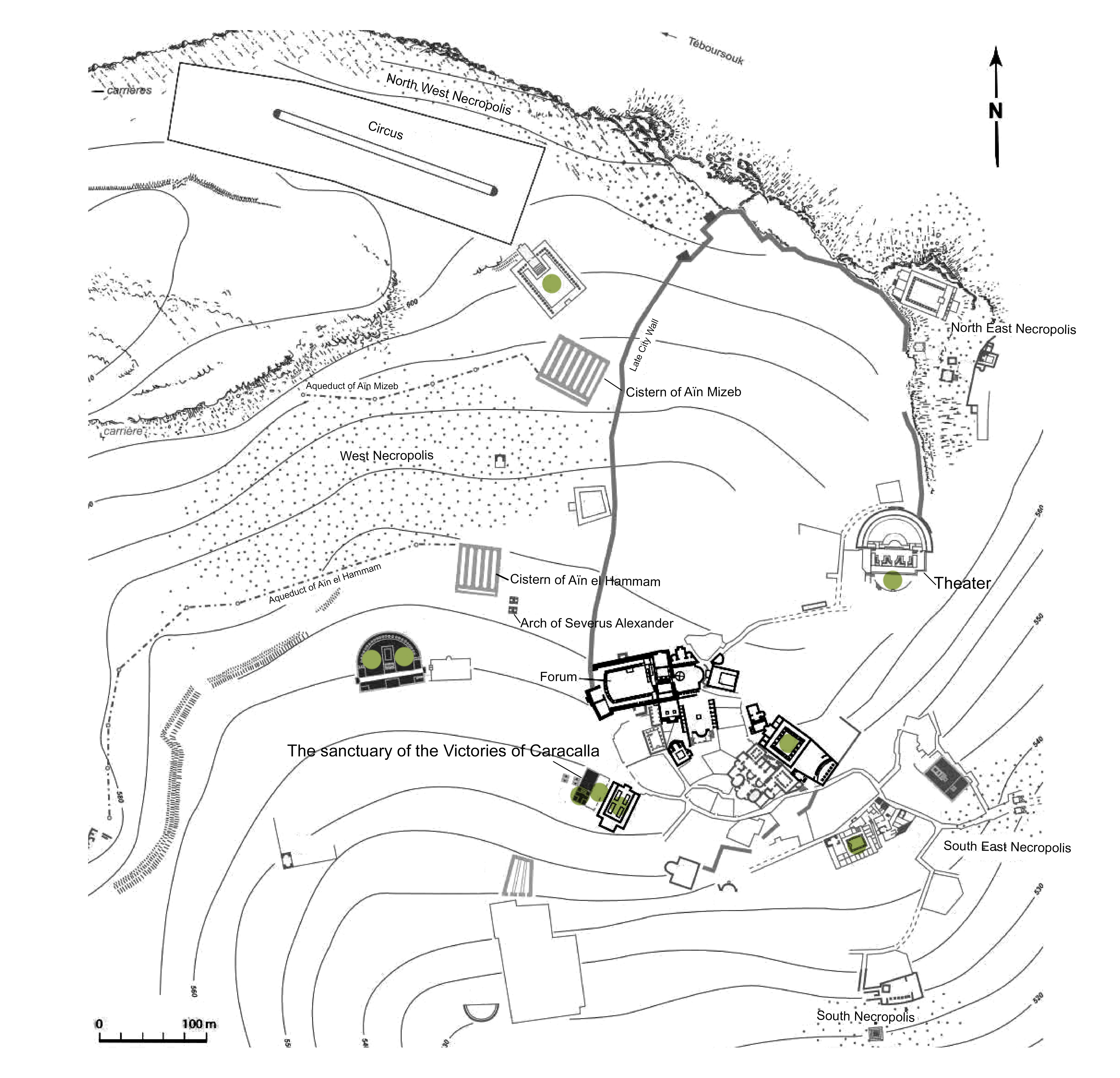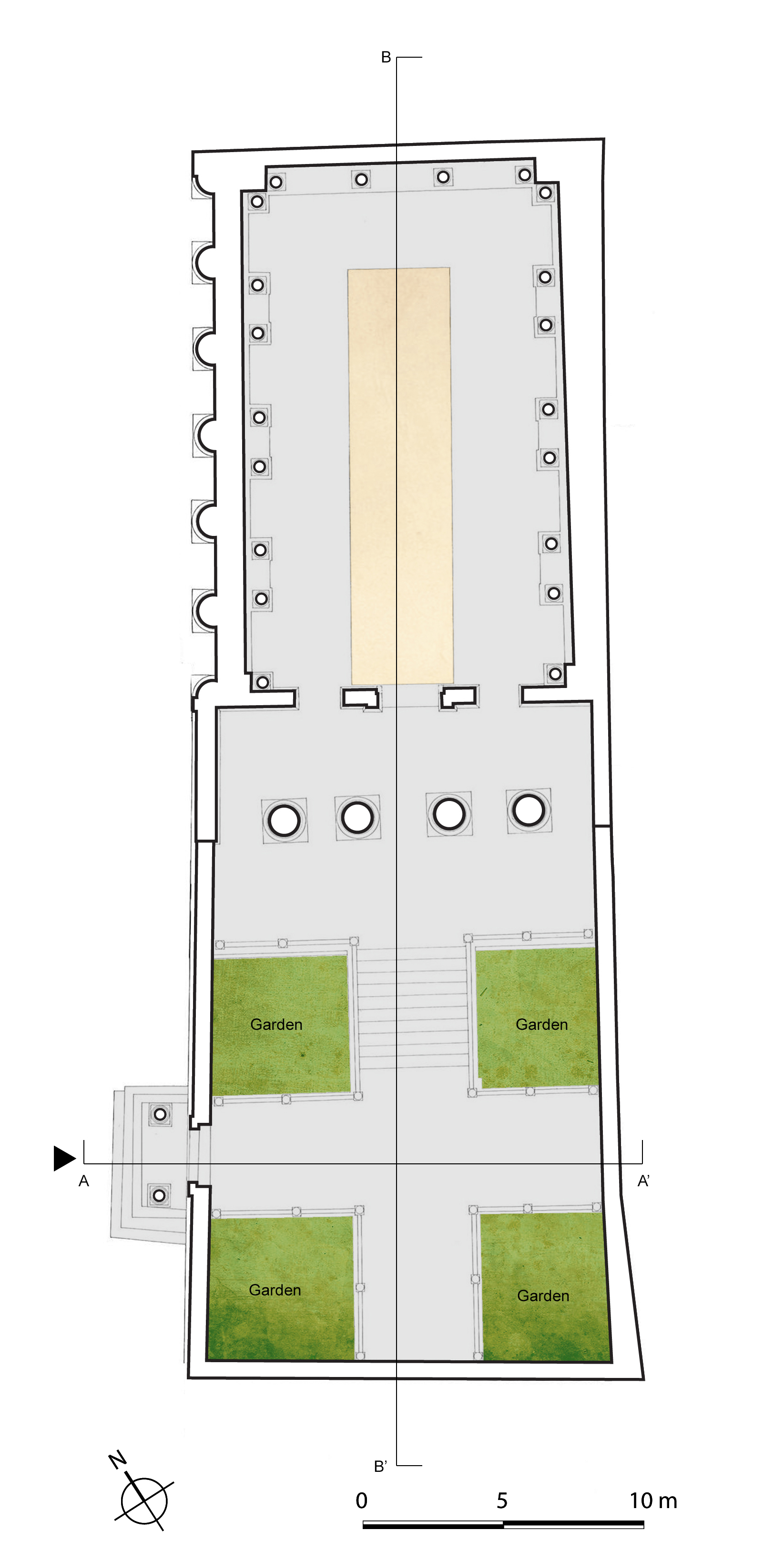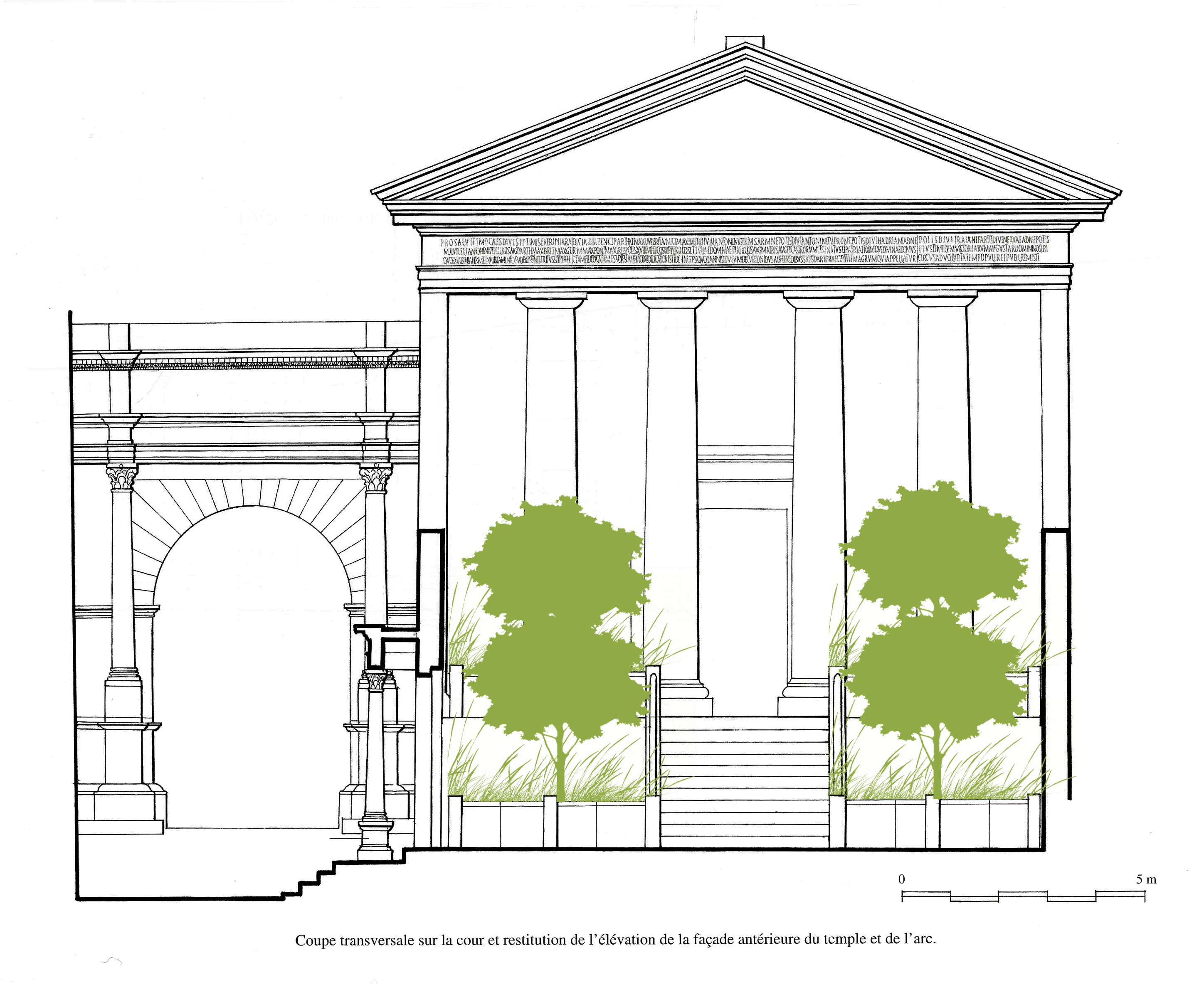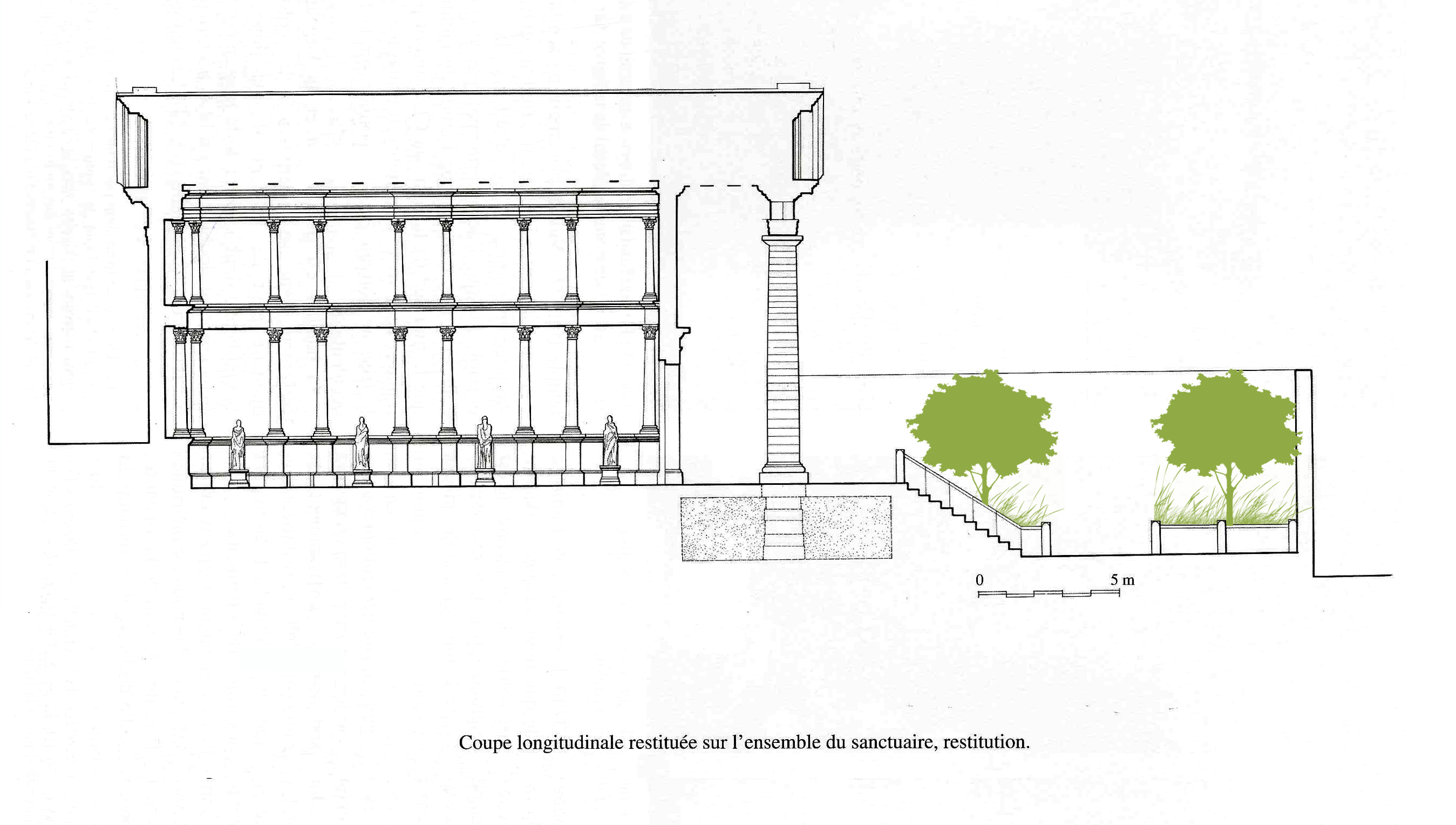The sanctuary of the Victories of Caracalla
Province
Africa Proconsularis
Africa proconsularis (Pleiades)
Province Description
The history of Roman Africa begins in 146 BC with the destruction of Carthage and the establishment of the province of Africa in the most fertile part of the Carthaginian Empire. The new province covered about 5000 square miles (17,172 square kilometers) of the northern part of modern Tunisia. A praetor governed the area from his headquarters at Utica. The Romans inherited a thriving agriculture developed by the Carthaginians. The climate was hospitable. Wheat and barley were the most important cereals; wine and olive oil were also produced and there were various fruit trees.
Location
THUGGA (Dougga) Tunisia
THUGGA (Dougga) Tunisia (Pleiades)

Plan of Thugga (Maurin, L., d’après le relevé général de Cl. Poinssot, Les ruines de Dougga, 1959, pl. h. t.)
Location Description
Annexed in 46 B.C., the Romanization of the city of Thugga that was probably a residence of the Numidian kings, was gradual but profound. It became Municipium Thuggense in 205, and was raised to the rank of a Colonia Licinia Septima Aurelia Alexandriana Thuggensesin in 261 under Gallien. Numerous buildings of this city overlooking the valley of the Ouadi Khaled, have been uncovered among them the Capitol dedicated to the Capitoline Triad in 166-67, the theater on the top of the plateau constructed under Antonius Pius, the Temple of Mercury, Fortune, Augustan Piety, Liber Pater, Concordia, Frugifer, Pluto, Saturn and the Temple of Caelestis which stands in the middle of a an olive grove. In the residential areas stands the Licinian Baths with their Palestrae and the Cyclops Baths and the Triumphal Arch of Septimus Severus set astride a street leading down the hill. Two building inscriptions (CIL VIII, 26606 and CIL VIII, 26607), dated to AD 166-169 mention a theater with a basilica, porticoes, and xystis.
Garden
The sanctuary of the Victories of Caracalla
Keywords
Garden Description
The sanctuary of the Victories of Caracalla, situated in the southwest of the forum, was built in a residential area in 214 CE on a particularly cramped and steep site (figure 12). Its urban and topographical situation conditioned its architecture. It is accessed by a lateral staircase, built onto bedrock, which leads to a courtyard, without a portico due to the lack of space. Its layout is similar to that of the sanctuaries of Minerva 2 and Dar Lachheb, with the cross-shaped layout of the paths that delimit four quadrangular spaces, probably planted, located at each corner of the courtyard, and bordered by solid balustrades, also in stone. A staircase of nine steps leads to the tetrastyle temple in antis and pseudo-peripteral which occupies the full width of the sanctuary. This example attests to the desire to introduce vegetation when space was lacking; could this be an indication of the role given to plants in certain cult spaces?
Maps
Plans

Fig.1: Plan of the sanctuary of the Victories of Caracalla (From Golvin, J.-C., Khanoussi M. (dir.) 2005, p. 41, fig. 17. http://www.dougga.rnrt.tn/file/restitution_sanctuaire_caracalla.pdf))
Images

Fig.2: Cross section of the courtyard (A-A’) (http://www.dougga.rnrt.tn/file/restitution_sanctuaire_caracalla.pdf)

Fig.3: Cross section of the courtyard (B-B’) (http://www.dougga.rnrt.tn/file/restitution_sanctuaire_caracalla.pdf)
Dates
214 CE
Bibliography
- Aounallah, S., Maurin, L., "Remarques sur la topographie rurale et urbaine du pagus et de la ciuitas de Thugga (Dougga, Tunisie)", in Hommes, cultures et paysages de l'Antiquité à la période moderne : Mélanges offerts à Jean Peyras, Rennes, Presses universitaires de Rennes, 2013. (worldcat)
- Golvin J.-C., Khanoussi M. (dir.), Dougga, études d’architecture religieuse. Les sanctuaires desVictoires de Caracalla, de « Pluton » et de Caelestis (Mémoires, 12), Bordeaux : Ausonius Éditions, 2005, pp. 33-77, fig. 17, 64. (worldcat)
- Malek, A.-A., "Le jardin dans les sanctuaires du Maghreb romain, premières approches", in Du culte aux sanctuaires : l’architecture religieuse dans l’Afrique romaine et byzantine, Brouquier Reddé, V., Baratte, Fr., Rocca E. (dir.), Paris, de Boccard, coll. Orient et Méditerranée, 2018, pp. 213-230, p. 364, pl. 14. (worldcat)
- Sections from http://www.dougga.rnrt.tn/file/restitution_sanctuaire_caracalla.pdf
Pleiades_ID
TGN ID
Contributor
Amina-Aïcha Malek (ORCID: 0000-0002-1628-615X)
Publication Date
21 Apr 2021